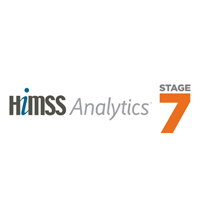Hospitals, clinics honored for advanced paperless environments
By Deborah Wormser

The UT Southwestern University Hospitals & Clinics recently received Stage 7 Awards from HIMSS Analytics. The awards honor health care facilities operating in a paperless environment that represent best practices in implementing electronic health records (EHR).
In addition to both University Hospitals – located in the Clements and Zale Lipshy buildings – those attaining Stage 7 on HIMSS’ 0-7 scale included all ambulatory clinics across six locations: James W. Aston Ambulatory Care Center; UT Southwestern Professional Office Buildings 1 and 2; the Harold C. Simmons Comprehensive Cancer Center; UT Southwestern Clinical Center – Richardson/Plano; UT Southwestern Clinical Center – Park Cities; and the Moncrief Clinical Institute, an affiliate of the Harold C. Simmons Comprehensive Cancer Center located in Fort Worth.

“UT Southwestern has long recognized that continuous improvement and rigorous research at the bedside are critical components of clinical excellence. Achieving HIMSS Stage 7 is yet another step in our long history of using our EHR system and the associated analytics to improve the delivery of care to our patients,” said Suresh Gunasekaran, Associate Vice President, Health System Management Services at UT Southwestern and Chief Information Officer, Health System.
Instead of paper charts to deliver and manage patient care, the hospitals combine discrete data, document images, and medical images within their electronic health records. The data can be readily shared electronically with all members of hospital care teams, as well as with caregivers at the ambulatory care clinics, he said. In addition, data from multiple records are analyzed to find patterns that could lead to improvements in quality of care, patient safety, or efficiency in health care delivery, Mr. Gunasekaran added.
As of the second quarter of 2014, only 3.2 percent of the more than 5,400 U.S. hospitals in the HIMSS Analytics Database had achieved Stage 7 status, and only 4.3 percent of the more than 26,000 ambulatory clinics in the database received the Stage 7 Ambulatory Award.
“UT Southwestern has an impressive population health program through the use of multiple best practice alerts, custom patient registries, and radar dashboards for audit and physician feedback on performance against peers and organizational standards,” said John Daniels, HIMSS Vice President for Strategic Relations. “The organization also has an impressive data governance strategy that allows them to conduct effective optimization analytics. They have developed a focused methodology for identifying clinical and business process improvement initiatives from defining the required data elements through data capture, measurement, and reporting against baseline metrics.”
UT Southwestern physicians provide medical care in 40 specialties to about 92,000 hospitalized patients and oversee approximately 2.1 million outpatient visits a year.
HIMSS Analytics is a part of HIMSS, a cause-based global enterprise headquartered in Chicago that produces health IT thought leadership, education, events, market research and media services.



